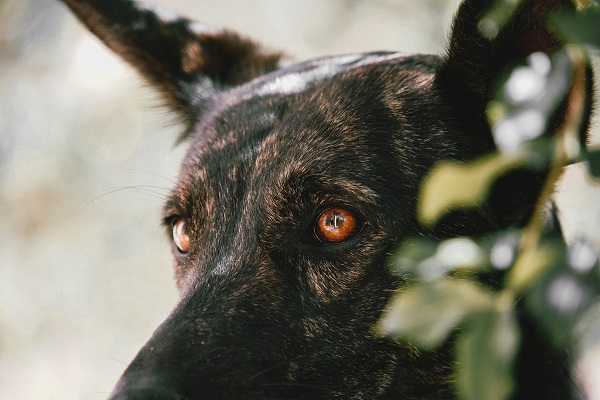Those expressive and big puppy eyes can be hard to resist. There are certain times when their eyes become red and full of tears. Now, that could be a cause of worry for you. Eye infections could be a cause of severe discomfort. If you see your dog in pain, pawing at its eyes often, the eyes seem red and show sensitivity to light; then your dog may be infected. However, you need not worry, as vets and canine experts have tips for what you can do in such situations.
When you understand the symptoms and causes of eye infections among dogs, you will be able to help your precious little one.
Experts these days tell you what you need to do to treat eye infections in dogs and how to prevent issues.
What Causes Eye Infections in dogs?
There is a wide range of reasons dogs suffer from eye infections. Eye infections among humans arise due to exposure to some bacteria or viruses. However, eye infections among dogs are a bit more complicated than that.
Experts say that unlike humans and – even – cats, primary eye infections are not as common among dogs. In dogs, irritation and ocular discharge are more commonly related to other underlying issues like allergies, structural abnormalities with eyelids, and dry eye issues. These issues lead to a secondary bacterial infection in the eyes that would further imply that eye infection among dogs is not contagious.
The following are the common causes of eye infections in dogs:
- Allergies
- Foreign particles in the eyes
- Issues with tear ducts and birth-related defects
- Canine distemper
- Injuries
- Tumors
- Dry eye
These above conditions and irritants could lead to conjunctivitis, an eye condition that happens because of the inflammation of the eye lining. Dogs may contract pink eye, but that condition is not that common. It is a contagious form of conjunctivitis caused due to a primary viral or bacterial infection.
If you wish to be safe when your dog shows any signs of eye infection, assume it to be contagious. Thus, keep them away from other pups. It will help avoid the supposed infection from spreading. Avoid sharing dishes used for water and food. Wash their bedding regularly using hot water.
Irrespective of what the root cause is, conjunctivitis is uncomfortable for dogs. If you do not treat it, their eyesight may be affected and even damaged permanently. Therefore, you must know the common symptoms of eye infections in dogs.
If you suspect your dog has an eye infection, it is always advisable to get help from professionals.
Signs that your dog is suffering from an eye infection
Excessive eye discharge is your dog’s first and most clear symptom of an eye infection. However, not all eye discharge of dogs is the same.
Following is a list of symptoms that you need to be aware of in this particular regard:
- Crust or goop in the corner of the eye
- Watery eyes
- Redness
- Swelling
- Squinting
- Reddish-brown discoloration of the fur around the eyes
- Gray or white mucus
- Green or yellow discharge
Most dogs and humans get eye boogers at some point or other.
Just as it happens with humans, dogs can get watery eyes because of benign irritants like water and dust. The eyes can return to normal in a few days. If your dog’s eyes discharge seems reddish-brown, it can be distressing for you as a pet parent. However, such staining close to the eyes is normal.
If your dog’s eyes produce gray or white mucus, it is a clear sign their eyes are not producing tears as they should. If your dog’s eyes are discharging in green or yellow, they are likely suffering from an eye infection. Hence, you must consult your vet to know what needs to be done to relieve your dog.
Types of dog eye infections
- Conjunctivitis (Pink Eye)
- Inflammation of the cornea
- Tear gland issues or physical abnormalities of the eyelid
- Uveitis – an inflammation of one or more inner structures of the eye, such as the iris, ciliary body, or choroid
When should you call the vet?
Is your pup scratching or rubbing its eyes – do they appear red, swollen, or painful? If yes, it may be better to take them to a vet to assess the condition. Experts say this is the first step, followed by consultation with a veterinary ophthalmologist, provided the doctor deems such a course of action appropriate in your case.
Since these infections could occur from diverse fundamental causes, they must be diagnosed as that would help determine the most effective treatment.
Experts say that your dog’s eyes would have to be examined thoroughly. It includes measuring the tear production and intraocular pressure and checking the possibility of corneal abrasions. These determine the reasons for the corneal discharge.
They opine that targeted therapy is necessary for the fundamental cause of eye irritation. Also, the condition is managed with proper treatment, and the eye discharge can be reduced.
Read Also: 6 Home Remedies for Dog Ear Infection
How to treat eye infections in dogs?
Since there are so many issues why your dog could suffer from eye infections, there is a wide range of options to treat them. The standard way of treating these infections is through antibiotics. However, if the infection persists despite the antibiotics, inform your vet about the present situation.
If the eye infection is non-bacterial, you may have to use eyewashes or ointments to soothe and heal your eyes. You may wonder if a dog’s eye infection would heal independently.
The answer to this question is no, it would not. At least, the chances of that happening are few, according to the experts. If you look up the internet, you will come across a range of natural remedies such as green tea and apple cider vinegar for treating eye infections in dogs.
However, experts do not recommend taking recourse to them. They say that in usual cases of conjunctivitis, home and over-the-counter remedies would be successful. You may be tempted by the prospect of skipping the vet’s office, but you should remember the seriousness of the situation.
Read Also: Bacterial Infection In Dogs
FAQs
Q: How severe is the eye infection of a dog?
A: If eye infection is left untreated, eye infections can lead to complete loss of vision in dogs or at least compromise it to some extent or other. Hence, it is advisable to seek medical attention as soon as possible. Getting them checked by an experienced vet who would diagnose the condition and help you know about the present situation is significant. Proper diagnosis is key to ensuring the right course of treatment for eye infections in dogs.
Q: How to treat eye infections in dogs at home?
A: Saline eye drops are used upon consultation with a vet. It will help safely flush out irritants in a dog’s eyes. They would not hurt your baby’s eyes.
Q: Do a dog’s eye infections get better on their own?
A: It is rare for the eye infections of a dog to get better by themselves. Hence, if you see your dog suffering from an eye infection, you should get them checked by a vet.
Q: How long does a dog’s eye infection take to get better?
A: It depends on the problem. For example, it takes three weeks for viral conjunctivitis to get better.
Q: How can you help your dog’s eyes heal?
A: The best way to help comfort your dog in case of eye infections is to administer antibiotics, and saline eye drops to control inflammation. You can administer pain-based medication in consultation with the vet.
Conclusion
You need to know ways to keep your dog’s eyes healthy, as they are precious. There are a few simple practices to make sure that they are healthy. First, when your dog has long hair, keep it trimmed around its eyes to avoid irritation.
Always use blunt-tip scissors and hold them parallel to their eyes when cutting or trimming their hair. Also, cut their hair only when they are calm. Keep their eyes clear of mucus and debris.
The process you follow for cleaning their eyes daily is what you would do to clean them, especially when they have an infection. Use a warm and clean cloth to clean the area to loosen and soften any crust or eye boogers in the surrounding fur.
Wipe the area clean gently, and make sure you never rub the eye itself. Routine eye care keeps your pup happy and healthy – make sure you notice changes in how their eyes appear. Do remember that this is an integral part of their overall health.

 DogExpress
DogExpress





















 in Chandigarh, India.
in Chandigarh, India. 
